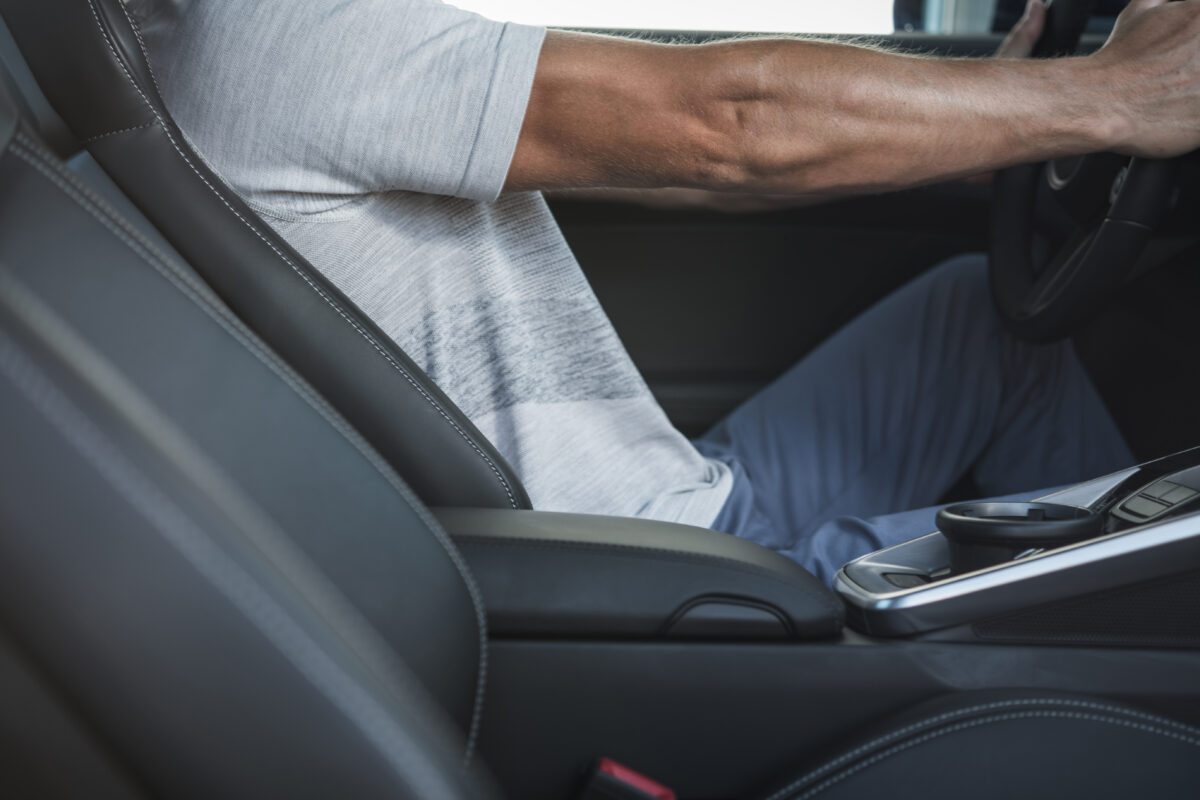Do You Have Good Driving Posture?

Whether you drive 90 minutes a day or 10, ergonomics matters.
Here are some tips to help you with good driving posture.
Whether you’re sitting at your desk or on the couch, lying in bed, standing in the kitchen, or driving, your posture plays a big factor in your overall health.
Poor posture leads to body aches and pains, which then limit your ability to complete normal activities. While you may not think about it, your posture when you’re behind the wheel is just as important as when you’re sitting anywhere else.
Your health is important to us, and that’s why we’ve outlined the keys to good driving posture as well as why it matters.
We Offer Same-Day Appointments
Why Is Driving Posture Important?
While not all of us spend hours sitting in traffic, good driving posture is important no matter how short or long your commute is.
Posture is important to your overall health, but good driving posture is also hugely important in the event of an accident.
Your headrest being in the correct position not only helps you see properly while driving, but it also prevents whiplash in the case of sudden impact. If your legs and arms are rigid and straight, this extra tension can send force throughout your entire body, maximizing the effects of a car crash.

If you’re sitting too close to your steering wheel, the impact from the airbag might do more harm than good, and if your legs are too far from the pedals, your reaction time will be greater, possibly resulting in more accidents.
Good driving posture and the proper alignment of your seat greatly reduces the possibility of accidents as well as serious injuries.
How Posture Affects Your Overall Health
Most people recognize the importance of posture at a job interview or networking event, but your posture has a huge bearing on your overall health.
Having good posture increases your flexibility, strength, and balance, while bad posture can lead to stiff muscles, joint pain, and cramps.
If left untreated, this pain becomes chronic pain, which can lead to trouble sleeping, difficulty breathing, and negative moods. Years of bad posture can also lead to skeletal problems, particularly in your spine.
Correcting bad posture before it becomes a pattern is the most important step in making sure it doesn’t lead to chronic, more severe problems down the road.
Proper Driving Posture
So what does good driving posture look like? As it turns out, it’s about more than having your hands at 10 and 2.
For proper back support while driving, your seat back should be slightly reclined at about a 100° angle so that, from the base of your neck to the small of your back, your entire spine is touching the seat at all times.
Your seat should be flat so that your hips are at least at the same level as your knees, and you should be seated high enough that you can clearly see over your steering wheel and easily see all your mirrors and dashboards without leaning forward.

Your steering wheel should be at chest height, to avoid putting strain on your arms and shoulders. Both your knees and arms should be slightly bent as opposed to rigid, and you should be able to depress the pedals fully without your back leaving the seat.
To avoid cutting off circulation, you should have a two-finger gap between the back of your knees and your seat. Lastly, your head should be resting comfortably against the headrest and not tilt forward.
If you know your back is a sore spot for you, lumbar support in your car is a must. If your car does not have lumbar support in the seats, a lumbar pillow can do the trick, so that you feel even pressure from your shoulders to your hips.
If you’re taking long drives, your posture is even more crucial. Take a break to stretch and readjust every couple hours to keep your body loose and relaxed.
Conclusion
Good posture is important to your overall health, no matter what activity you’re doing. However, because most of us don’t feel the effects of bad posture until years later, it’s pushed to the back of our minds.
We spend a lot of time in our cars, and though there’s a lot to focus on when we’re driving, having good driving posture should absolutely be one of them.
In the immediate future, good posture can make you a better driver and prevent accidents or serious injury. In the long run, just like good standing and sitting posture, good driving posture can prevent issues like misaligned joints, pinched nerves, and more.
At Oviedo Chiropractic, your health is our top priority, and we strive to stop pain and discomfort at their source. If you’re in the driver’s seat a lot and it’s starting to affect your daily life (or you were the victim of a recent car accident), come in and see us so we can get you back to feeling your best.

